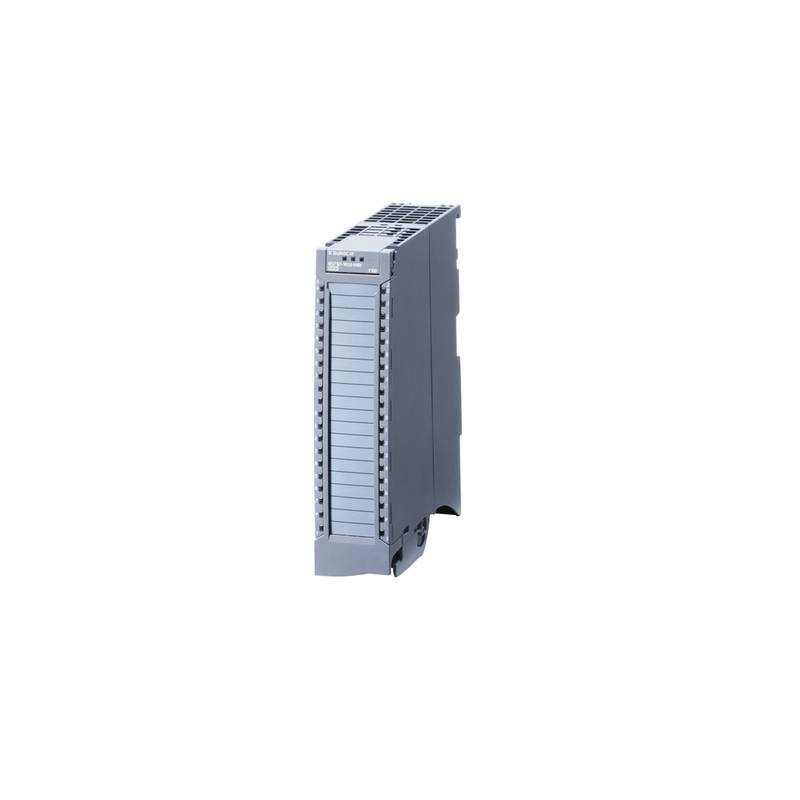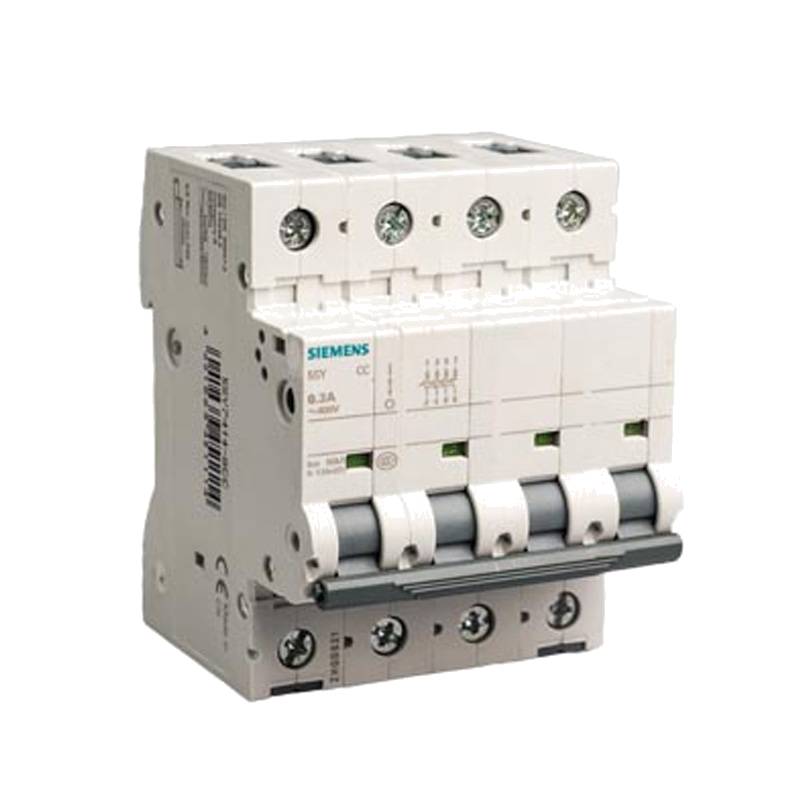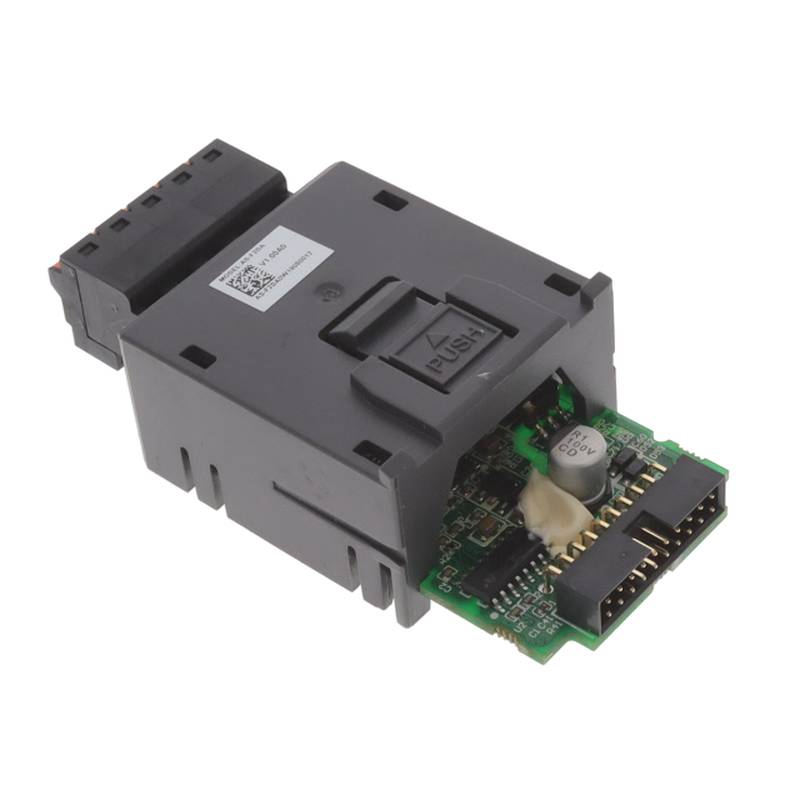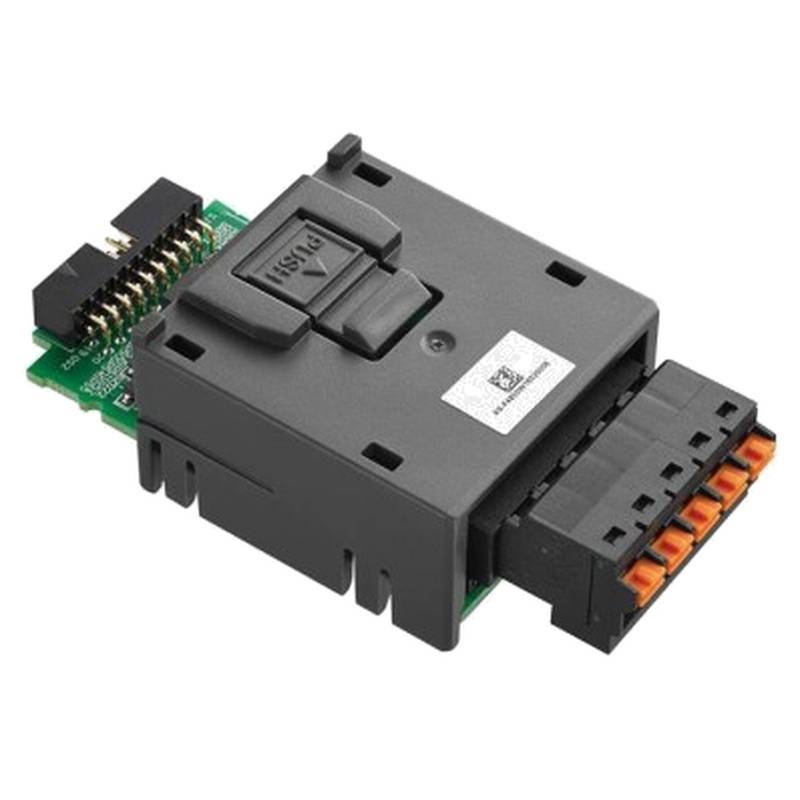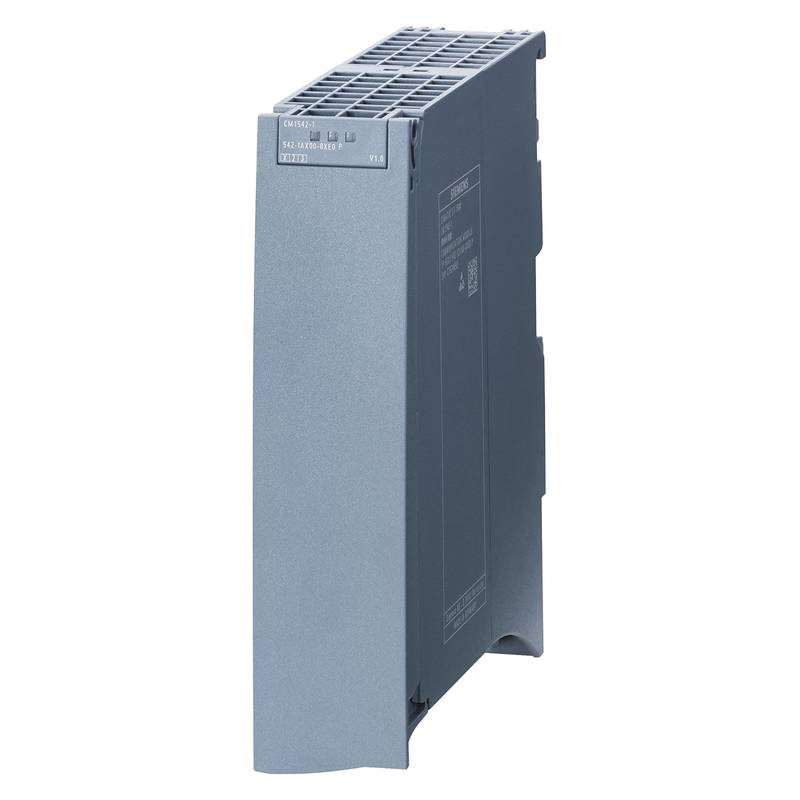
The Siemens 6ES7521-1BL00-0AB0 stands as a high-density digital input module designed for demanding industrial automation tasks. This module offers 32 channels, enabling efficient data acquisition from a large number of sensors and switches within a compact footprint. Its robust design ensures reliable operation in harsh environments, a hallmark of Siemens' SIMATIC S7-1500 series. Key technical parameters include a 24V DC nominal voltage, a high switching frequency, and an intrinsically safe design for specific hazardous area applications. The module excels in applications requiring precise and rapid signal processing, making it a cornerstone for sophisticated control systems.
Product Specifications
| Feature | Specification |
| :------------------------- | :------------------------------------------- |
| Module Type | Digital Input Module |
| Siemens Product Number | 6ES7521-1BL00-0AB0 |
| Number of Channels | 32 |
| Nominal Voltage | 24 V DC |
| Input Current | 5 mA |
| Switching Frequency | 5 kHz (Type 1), 1 kHz (Type 2) |
| Isolation | Optocoupler, 2-wire |
| Diagnostic Functions | Module diagnostics, line diagnostics |
| Compatibility | SIMATIC S7-1500 CPU |
| Dimensions (W x H x D) | 35 mm x 147 mm x 129 mm |
| Degree of Protection | IP20 |
Core Features & Market Positioning
The Siemens 6ES7521-1BL00-0AB0 distinguishes itself through its exceptional channel density, allowing for significant space savings within control cabinets and reducing overall system costs. This high-density design is crucial for large-scale automation projects where every millimeter counts. Its integration into the SIMATIC S7-1500 platform ensures seamless compatibility and leverage of advanced diagnostics and communication capabilities inherent to Siemens' state-of-the-art PLC family. The module's robust performance and reliability position it as a premium choice for industries requiring unwavering operational integrity, such as automotive manufacturing, pharmaceuticals, and complex process control. The inclusion of advanced diagnostic features, like line diagnostics, provides proactive insights into potential issues, minimizing downtime and enhancing maintenance efficiency.
Key Application Scenarios
This 32-point high-density digital input module is ideally suited for applications demanding extensive binary signal acquisition. Common use cases include monitoring the status of numerous limit switches on automated machinery, collecting data from a vast array of pushbuttons and selector switches in human-machine interfaces, and reading status signals from solenoid valves and actuators across large production lines. In process industries, it effectively handles signals from proximity sensors, flow switches, and level indicators where high channel counts are essential for comprehensive process monitoring and control. Its suitability for rapid signal processing also makes it valuable in high-speed packaging and assembly operations.
Practical System Integration Guidance
Integrating the Siemens 6ES7521-1BL00-0AB0 into an S7-1500 system is straightforward, leveraging the module's plug-and-play capabilities. The module connects directly to the backplane of the S7-1500 CPU. Wiring typically involves connecting the 24V DC supply to the module's power terminals and field signals to the corresponding input channels. The module utilizes a standard 40-pin front connector, facilitating quick and secure field wiring. For programming, engineers will configure the module within the TIA Portal software, assigning input addresses to the 32 digital channels. The TIA Portal offers extensive libraries for digital input handling, allowing for simple parameterization of filter times, signal edge detection, and diagnostic settings to optimize performance for specific applications.
Operation and Risk Mitigation
Safe operation of the 6ES7521-1BL00-0AB0 relies on adherence to standard industrial electrical safety practices and the module's inherent design features. Ensure the module is powered within its specified voltage range (24V DC) and that all field wiring is correctly terminated to prevent short circuits. The module's optocoupler isolation provides inherent protection against transient voltage spikes. Diagnostic functions, such as line diagnostics, are critical for identifying wiring faults or sensor failures early, thus mitigating risks of unexpected equipment behavior or downtime. In case of module faults, error codes will be reported to the S7-1500 CPU, which can be accessed via diagnostics tools in TIA Portal for troubleshooting. Always consult the official Siemens documentation for detailed safety guidelines and fault code interpretations.
Scalability & Long-Term Value
The Siemens 6ES7521-1BL00-0AB0 offers excellent scalability due to its compatibility with the entire SIMATIC S7-1500 platform, a modern and future-proof automation solution. As automation needs grow, additional digital input modules, or modules with different functionalities (analog inputs/outputs, communication modules), can be seamlessly added to the same S7-1500 rack, expanding the system's capabilities without requiring a complete hardware overhaul. This modularity ensures that the investment in the S7-1500 system retains its value over time. Furthermore, the S7-1500 platform is designed to integrate with Industry 4.0 concepts, enabling connectivity to cloud platforms, IIoT solutions, and advanced data analytics for enhanced operational intelligence and predictive maintenance strategies, securing long-term value for businesses embracing digital transformation.
Frequently Asked Questions (FAQs)
Q1: What is the maximum input frequency supported by the Siemens 6ES7521-1BL00-0AB0?
The Siemens 6ES7521-1BL00-0AB0 digital input module supports a maximum switching frequency of up to 5 kHz for Type 1 signals. This allows for rapid detection of state changes from connected devices.
For Type 2 signals, the maximum switching frequency is 1 kHz, which is suitable for applications requiring less dynamic response. Proper configuration within TIA Portal is essential to leverage these frequencies effectively.
Understanding the signal type and required response time is crucial for selecting the appropriate module and configuring its parameters for optimal performance.
Q2: Can this module be used in hazardous areas?
The Siemens 6ES7521-1BL00-0AB0 is designed for standard industrial environments with an IP20 degree of protection. It is not intrinsically safe by default for direct use in all hazardous locations.
However, for hazardous area applications, it's possible to use this module if the field devices are suitably protected or if the module itself is installed within an approved enclosure that meets area safety requirements.
Always consult the specific hazardous area certifications and guidelines from Siemens and relevant safety authorities before deploying in potentially explosive atmospheres.
Q3: What is the typical wiring for a Siemens 6ES7521-1BL00-0AB0 module?
The module requires a 24V DC power supply connected to its designated power terminals. Each of the 32 input channels is then connected to a sensor or switch output.
Field wiring is typically completed using a 40-pin front connector, which offers screw terminals or push-in connections for easy and secure conductor termination.
Ensure that signal wiring is correctly polarized (positive and negative) and that all connections are properly insulated to prevent faults and ensure reliable data acquisition.
Q4: How do I troubleshoot a non-responsive input channel on this module?
First, verify the 24V DC power supply to the module is within the specified range. Check the wiring from the sensor or switch to the specific input channel for continuity and correct termination.
Confirm that the input signal is actively being sent by the connected device and that the device itself is functioning correctly. Use the diagnostic functions within TIA Portal to check for any reported line faults.
If the issue persists, re-examine the module's configuration in TIA Portal, ensuring the correct input address and parameters are assigned. Test the channel with a known working device if possible.
Q5: What is the role of diagnostic functions in this module?
Diagnostic functions, such as module diagnostics and line diagnostics, provide real-time status information about the module's operation and connected field devices. Line diagnostics can detect open circuits or short circuits on input lines.
These functions allow for proactive identification of potential issues before they lead to critical system failures or production downtime, enabling timely maintenance interventions.
By analyzing diagnostic messages within the TIA Portal, operators and maintenance personnel can quickly pinpoint the root cause of problems, leading to faster resolution and improved system uptime.
Q6: How does the 6ES7521-1BL00-0AB0 compare to lower-density digital input modules?
The primary advantage is its significantly higher channel density (32 channels per module), which reduces cabinet space and wiring complexity compared to modules with fewer channels. This leads to cost savings in terms of hardware and installation.
While offering more inputs, the performance and features are generally comparable to other S7-1500 digital input modules, including robust diagnostics and high switching speeds.
For applications with a large number of binary inputs, the 6ES7521-1BL00-0AB0 provides a more efficient and cost-effective solution for signal acquisition.
Q7: What programming software is required for this module?
The Siemens 6ES7521-1BL00-0AB0 is programmed and configured using the Siemens TIA Portal (Totally Integrated Automation Portal) software. This is the standard engineering environment for the SIMATIC S7-1500 automation system.
Within TIA Portal, you can assign input addresses, configure diagnostic settings, set signal filtering parameters, and integrate the module's status into your PLC logic.
TIA Portal provides a unified platform for hardware configuration, programming, diagnostics, and simulation, streamlining the entire automation project lifecycle.
Q8: What is the maximum number of these modules that can be used in an S7-1500 system?
The maximum number of modules that can be installed in an S7-1500 system depends on the specific CPU and the chosen SIMATIC S7-1500 backplane or rack. Larger CPUs support more modules.
Each S7-1500 CPU has a limit on the total memory and I/O capacity it can address, as well as a physical limit on the number of slots available in its rack.
Consult the technical specifications of the selected S7-1500 CPU and rack system to determine the exact number of 6ES7521-1BL00-0AB0 modules or any other modules you can integrate.
Q9: What is the voltage range for the input signals?
The nominal voltage for the digital inputs on the 6ES7521-1BL00-0AB0 module is 24V DC. This means the module is designed to reliably detect binary signals that are switched at or near this voltage level.
When a signal is applied within the specified '1' signal range (typically 15V to 30V DC), the input is registered as active. Signals below the '0' threshold (typically 5V DC and below) are registered as inactive.
Ensure that the voltage output from your sensors and switches falls within these defined ranges to guarantee accurate signal acquisition by the module.
Q10: Does this module support hot-swapping?
The Siemens 6ES7521-1BL00-0AB0 module, like most modules within the SIMATIC S7-1500 series, generally supports hot-swapping. This means you can insert or remove the module while the system is powered and running, without needing to shut down the PLC.
However, it is always recommended to consult the specific S7-1500 system manual and perform hot-swapping procedures during planned maintenance windows if possible, or with extreme caution to avoid any accidental shorts or disruptions.
Proper handling procedures, including grounding yourself and ensuring the module is correctly seated, are crucial to prevent damage to the module or the system during hot-swapping operations.














